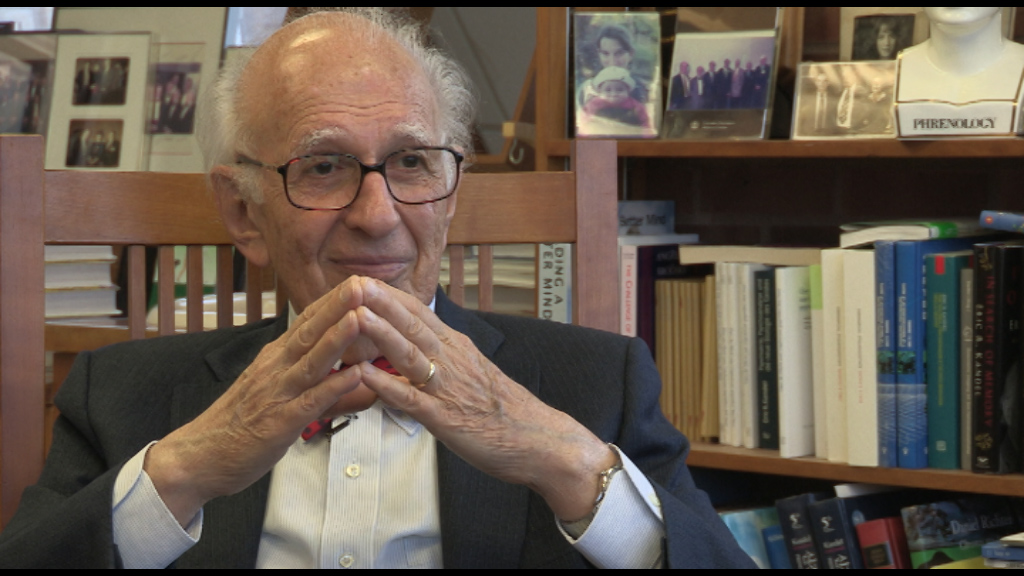NEXT STORY

How I learned I’d won the Nobel Prize
RELATED STORIES

NEXT STORY

How I learned I’d won the Nobel Prize
RELATED STORIES



So that was sort of the major thing we looked… We also looked a little bit at post-traumatic stress disorder. This came out of my walking through the lab and telling people, you know, one example of a functional prion is a biological curiosity, two examples is a biological principle. Let's find another example. So Joe Rayman in my lab, who's unbelievably gifted, scoured the literature, and found that there is in many cells something called TIA, T cell intracellular antigen, that forms aggregates in cells. And these aggregates… even the person who studied it suspected they may have prion-like properties. So we put it in the yeast and we tested it rigorously and we found classic features of prion properties: forms aggregates, self-perpetuating, SDS resistant, etc. And he is beginning to explore what it does. And it turns out that it's involved in post-traumatic stress disorder. It's a protective factor, but it's a protective factor only in female mice. If you knock it out, female mice show a much more profound response to post-traumatic stress disorder. And it turns out, it seems to be a sex-specific splicing factor of the glucocorticoid receptor. So we're really trying to pin this down, and we're close to doing it. We also raised the question, there must be a male-specific splicing factor, and we're looking for that as well. Anyway. We're having a very good time with that.
Some time ago, way before the experiment with Scott Small and Gerard Karsenty we thought… actually Denise's idea…. Wally Gilbert, who's a wonderful molecular geneticist is a good friend of ours. We were having dinner together one night, and I was telling him about the early experiments with PKA and aging mice. And Denise said, there's a little red pill here, and you guys should form a company. So we've formed a company for age-related memory loss. Actually, Scott Small was on the board. And after a while we sold it to Hoffmann-La Roche. And at the time we sold it we had several drugs that were better than phosphodiesterase inhibitors that were then available, but the FDA did not accept age-related memory loss as a distinct entity. In the last year, it's changed its policy but 10 years ago when we were doing this, there was nothing like this going on. So I think Hoffmann-La Roche is in a good position now, but…
Eric Kandel (b. 1929) is an American neuropsychiatrist. He was a recipient of the 2000 Nobel Prize in Physiology or Medicine for his research on the physiological basis of memory storage in neurons. He shared the prize with Arvid Carlsson and Paul Greengard. Kandel, who had studied psychoanalysis, wanted to understand how memory works. His mentor, Harry Grundfest, said, 'If you want to understand the brain you're going to have to take a reductionist approach, one cell at a time.' Kandel then studied the neural system of the sea slug Aplysia californica, which has large nerve cells amenable to experimental manipulation and is a member of the simplest group of animals known to be capable of learning. Kandel is a professor of biochemistry and biophysics at the College of Physicians and Surgeons at Columbia University. He is also Senior Investigator in the Howard Hughes Medical Institute. He was the founding director of the Center for Neurobiology and Behavior, which is now the Department of Neuroscience at Columbia University. Kandel's popularized account chronicling his life and research, 'In Search of Memory: The Emergence of a New Science of Mind', was awarded the 2006 Los Angeles Times Book Award for Science and Technology.
Title: Investigating the biology of post-traumatic stress disorder
Listeners: Christopher Sykes
Christopher Sykes is an independent documentary producer who has made a number of films about science and scientists for BBC TV, Channel Four, and PBS.
Tags: Age-Related Memory Loss, PKA, T cell intracellular antigen, prion, post-traumatic stress disorder, sex-specific splicing factor, female mice
Duration: 2 minutes, 54 seconds
Date story recorded: June 2015
Date story went live: 04 May 2016